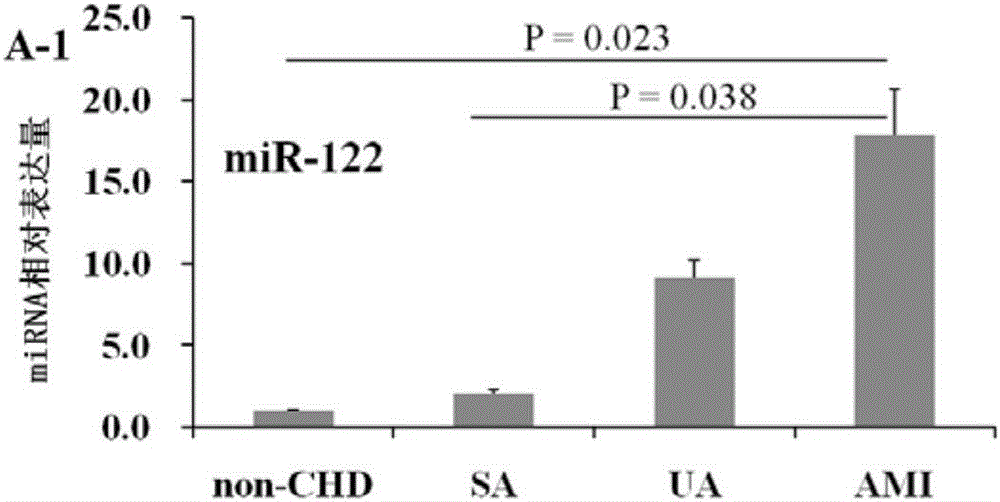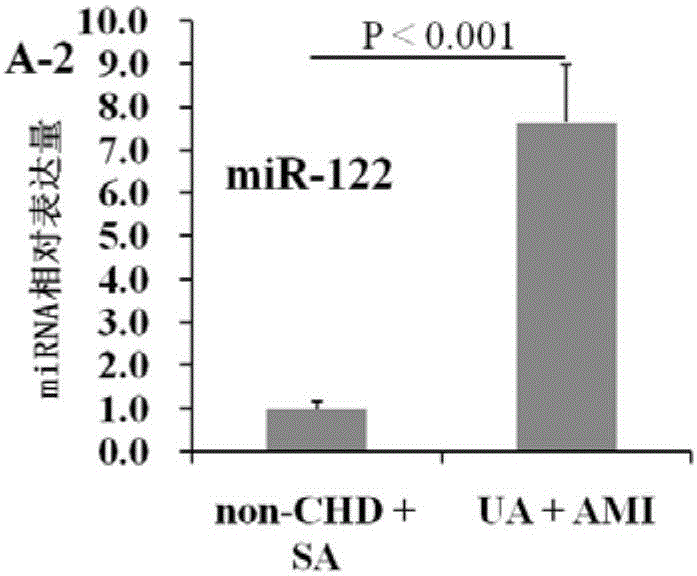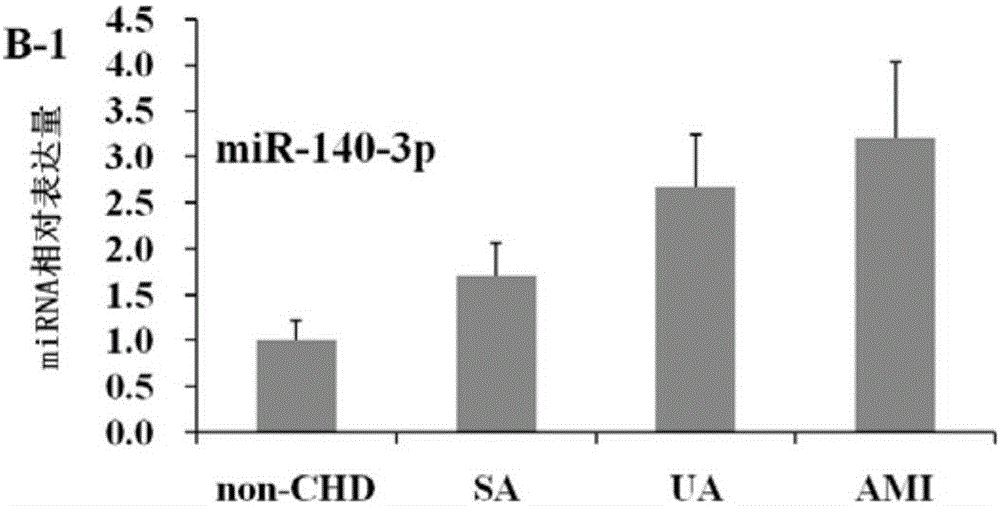Circulating miRNAs and their applications for early diagnosis of acute coronary syndrome
A technology for early diagnosis of coronary syndrome, applied in the direction of DNA/RNA fragments, recombinant DNA technology, microbial measurement/testing, etc., can solve problems that are difficult to treat as acute coronary syndrome, and achieve high sensitivity and high specificity sexual effect
- Summary
- Abstract
- Description
- Claims
- Application Information
AI Technical Summary
Problems solved by technology
Method used
Image
Examples
Embodiment 1
[0055] Example 1, miRNA chip analysis verifies the expression difference of the markers of the present invention between the healthy group and the high-risk group
[0056] In the present embodiment, a total of 32 cases of acute coronary syndrome and healthy controls were collected, divided into a healthy group, a high-risk group, an unstable angina pectoris group and an acute myocardial infarction group (8 cases in each group). Significant difference (see Table 1).
[0057] Table 1. miRNA chip analysis of clinical characteristics of samples in each group
[0058]
[0059] miR-3149, miR-122, miR-2861, miR-140-3p, miR-720 and The expression levels of miR-144 and miR-1225-3p screened by miRNA chips (AgilentmiRNAs microarray Version 16.0) were quantitatively detected.
[0060] The quantitative results showed that compared with the healthy group, high-risk group and stable angina group, circulating miR-122, miR-140-3p, miR-144, miR-720, miR-1225-3p, miR- The expression levels...
Embodiment 2
[0064] Example 2, the first stage of qRT-PCR analysis to verify the expression difference of the markers of the present invention in individuals with acute coronary syndrome and non-acute coronary syndrome
[0065] Plasma samples were collected from 111 patients between February and March 2012, including 21 cases of non-coronary heart disease, 30 cases of stable angina pectoris, 30 cases of unstable angina pectoris and 30 cases of acute myocardial infarction. There was no significant difference in clinical characteristics between the groups ( See Table 3).
[0066] Table 3. The clinical characteristics of samples from each group of 7 miRNAs verified by the first stage of qRT-PCR analysis
[0067]
[0068]
[0069] The expression levels of miR-3149, miR-122, miR-2861, miR-140-3p, miR-720, miR-144, and miR-1225-3p in plasma were detected by qRT-PCR.
[0070] The results showed that miR-122 and miR-720 in the acute myocardial infarction group were significantly higher than...
Embodiment 3
[0071] Example 3, the second stage of qRT-PCR analysis to verify the expression difference of the markers of the present invention in individuals with acute coronary syndrome and non-acute coronary syndrome
[0072] A further 428 plasma samples were collected from April to August 2012 (51 cases of non-coronary heart disease, 43 cases of stable angina, 257 cases of unstable angina, and 77 cases of acute myocardial infarction). There was no significant difference in clinical characteristics between the groups ( See Table 4).
[0073] Table 4. The second stage verifies the clinical characteristics of each group of samples of miRNAs of the present invention
[0074]
[0075]
[0076] The expressions of miR-122, miR-140-3p, miR-720, miR-2861 and miR-3149 in the above plasma samples were detected by qRT-PCR.
[0077] The results showed that the expression levels of miR-122, miR-140-3p, miR-720, miR-2861 and miR-3149 were significantly higher in the acute coronary syndrome gro...
PUM
 Login to View More
Login to View More Abstract
Description
Claims
Application Information
 Login to View More
Login to View More - R&D
- Intellectual Property
- Life Sciences
- Materials
- Tech Scout
- Unparalleled Data Quality
- Higher Quality Content
- 60% Fewer Hallucinations
Browse by: Latest US Patents, China's latest patents, Technical Efficacy Thesaurus, Application Domain, Technology Topic, Popular Technical Reports.
© 2025 PatSnap. All rights reserved.Legal|Privacy policy|Modern Slavery Act Transparency Statement|Sitemap|About US| Contact US: help@patsnap.com



